Thaad: US begins deploying missile defence system in South Korea
- Published
- comments
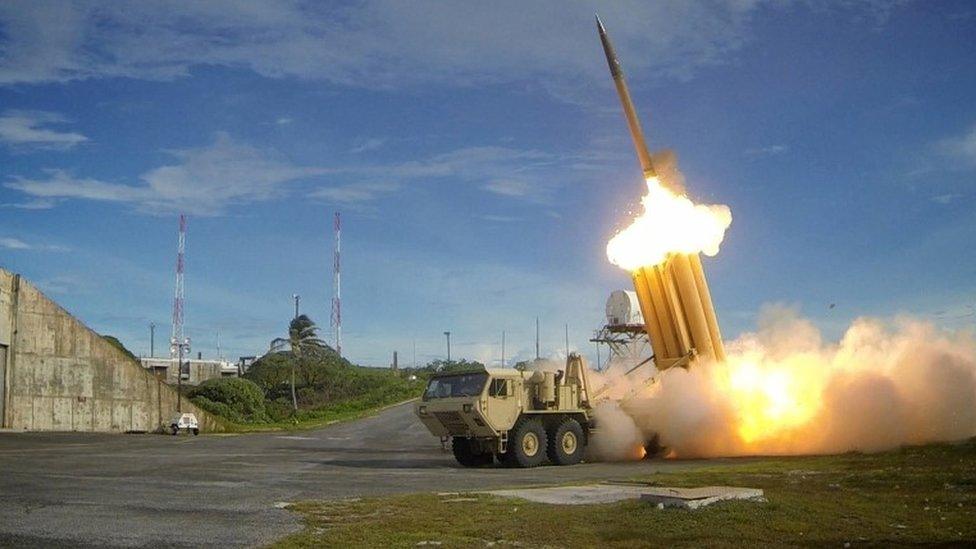
The defence system will take out any missiles considered a threat to South Korea
The US says it has begun deploying the first parts of a controversial missile defence system in South Korea.
The Terminal High-Altitude Area Defense system (Thaad) is designed to protect against threats from North Korea.
The move to begin installing the system comes a day after the North launched four ballistic missiles, breaking international sanctions.
But the US-South Korean arrangement has angered many on the Korean peninsula and around the region, including China.
South Korean media said operations to install a Thaad battery had begun on Monday, with some parts flown from the US to an air base near Seoul. A statement from the US military, external confirmed that the "first elements" of the system had been sent to South Korea.
South Korea's Yonhap news agency, quoting a military official, said the system could be operational "as early as April".
Chinese foreign spokesman Geng Shuang said on Tuesday that China opposed the deployment and would "resolutely take necessary measures to defend our own security interests".
What is the Terminal High Altitude Area Defense System (Thaad)?
Shoots down short and medium-range ballistic missiles in the terminal phase of their flight
Uses hit-to-kill technology - where kinetic energy destroys the incoming warhead
Has a range of 200km and can reach an altitude of 150km
US has previously deployed it in Guam and Hawaii as a measure against potential attacks from North Korea

1. The enemy launches a missile
2. The Thaad radar system detects the launch, which is relayed to command and control
3. Thaad command and control instructs the launch of an interceptor missile
4. The interceptor missile is fired at the enemy projectile
5. The enemy projectile is destroyed in the terminal phase of flight
The launcher trucks can hold up to eight interceptor missiles.

But the deployment is controversial?
There is domestic opposition - many South Koreans believe the defence system will itself become a target, endangering people who live around the military sites. Opponents have staged multiple demonstrations.
Internationally, both China and Russia have raised concerns, saying the system could affect the regional security balance.
Last year, China's foreign minister said the system went "far beyond" the defence needs of the Korean peninsula. Russia's envoy to Seoul has called it a "direct threat" to national security.
So why is China worried? By Jonathan Marcus, BBC News defence correspondent
The Thaad system is well-suited to defend South Korean targets against relatively limited range North Korean missiles. But it has no ability to intercept Chinese inter-continental ballistic missiles that target the US. Why then is China so annoyed?
What concerns Beijing is the system's powerful X-band radars that can "reach" far into Chinese territory. The Chinese military worries that these could be used to spot Chinese missile launches and feed the data to cue up other US defensive systems, eg interceptor missiles based in the US, potentially affecting China's deterrent capability.
But the US already has powerful radars based in Japan and a Thaad system in Guam. It's not easy to quantify the additional benefit that Thaad radars in South Korea would give the Pentagon. But they will certainly give the South Koreans an important and expanded new layer of defence against missile attack.
What happened in the latest missile launch?
North Korea threatened last week to fire missiles in response to the start of the Foal Eagle US-South Korean military exercises. The annual drills infuriate the North, which sees them as preparation for an invasion from the South.
Then early on Monday, it fired four missiles from the Tongchang-ri region, near the border with China.
Three of the projectiles flew some 1,000km (620 miles) and fell into Japan's exclusive economic zone (EEZ). The exact type of missile is not yet clear but South Korean officials said they appeared to be an upgraded version of a Scud missile.

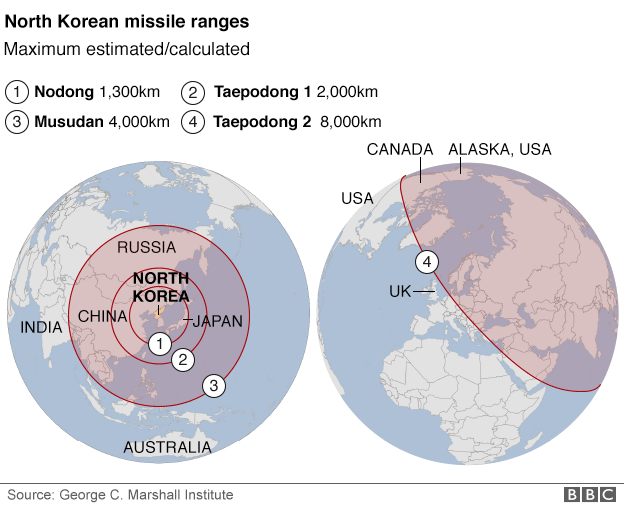
What was the international reaction?
The US and Japanese leaders held phone discussions after the missile launch and the United Nations Security Council is due to meet on Wednesday in an emergency meeting requested by the US and Japan to discuss the incident.
Admiral Harry Harris, commander of the US South Pacific Command, said the launch confirmed "the prudence" of the decision to deploy Thaad.
But the deployment will likely worsen tensions between Seoul and Beijing. In recent days South Korea has accused China of economic retaliation linked to Thaad in areas, including tourism and air travel.
There has also been an outpouring of anger by Chinese consumers against the South Korean retailer Lotte, which allowed Thaad to be installed on one of its sites. Several of Lotte's stores in China have been closed down suddenly. Beijing rejects claims of economic retaliation.
- Published3 February 2017
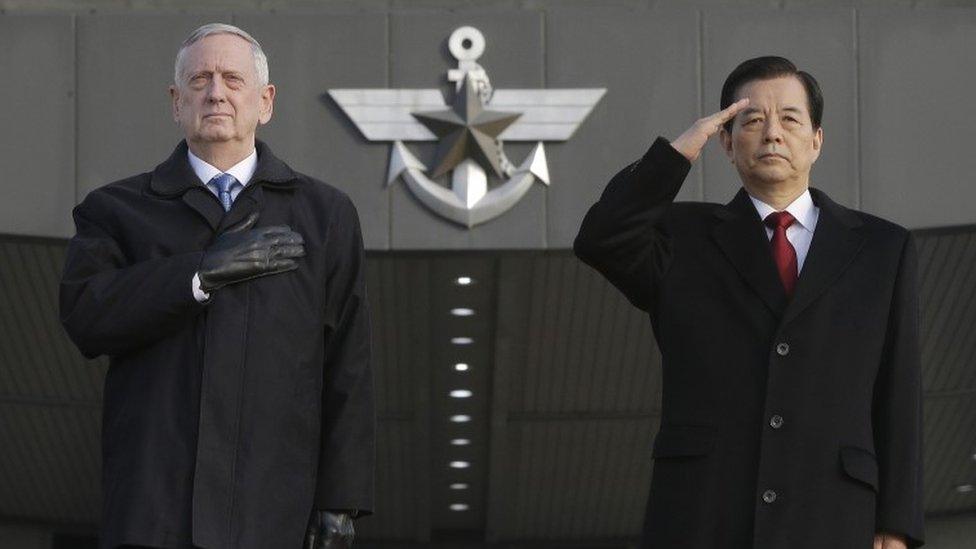
- Published6 March 2017
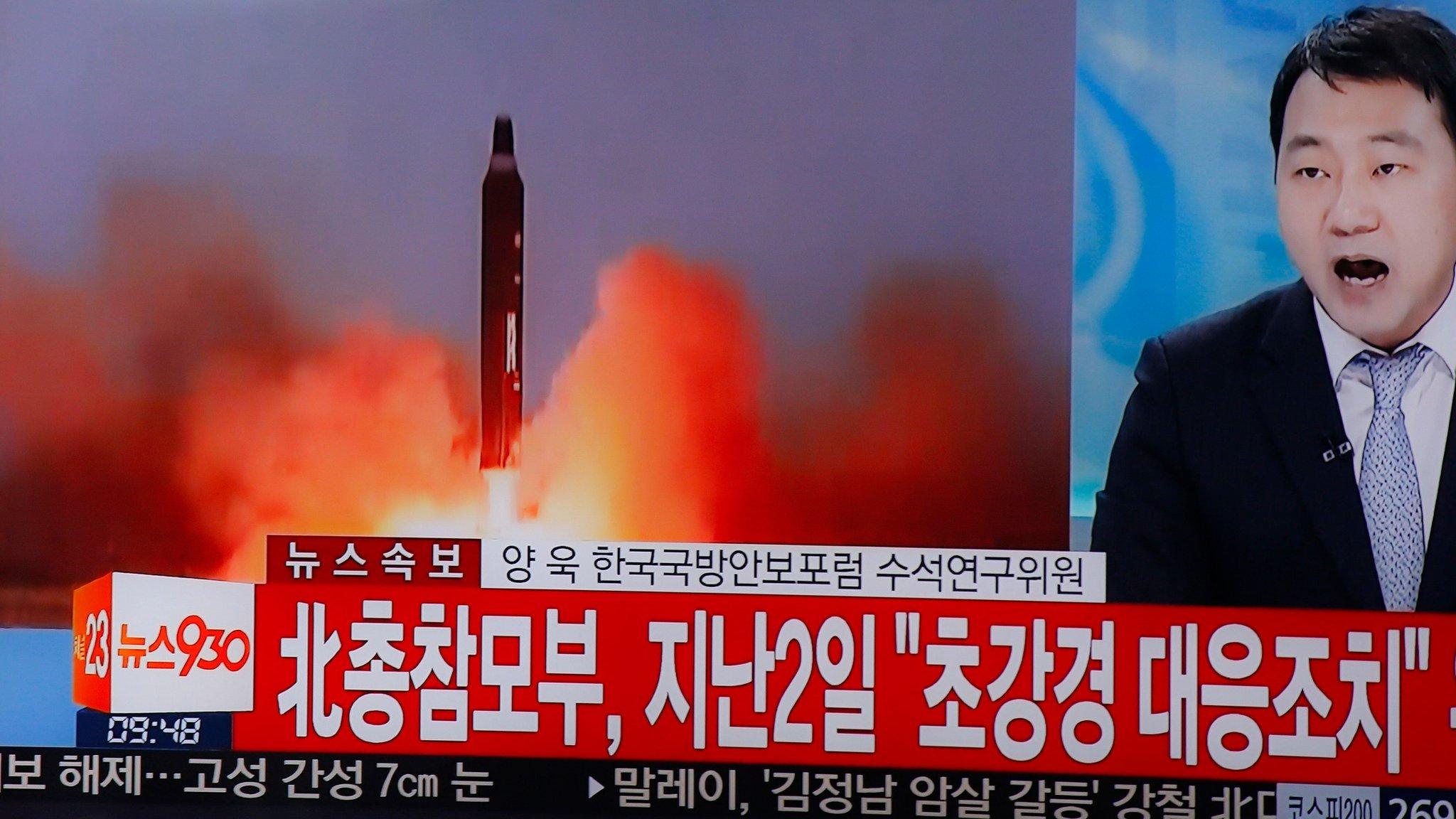
- Published1 January 2017
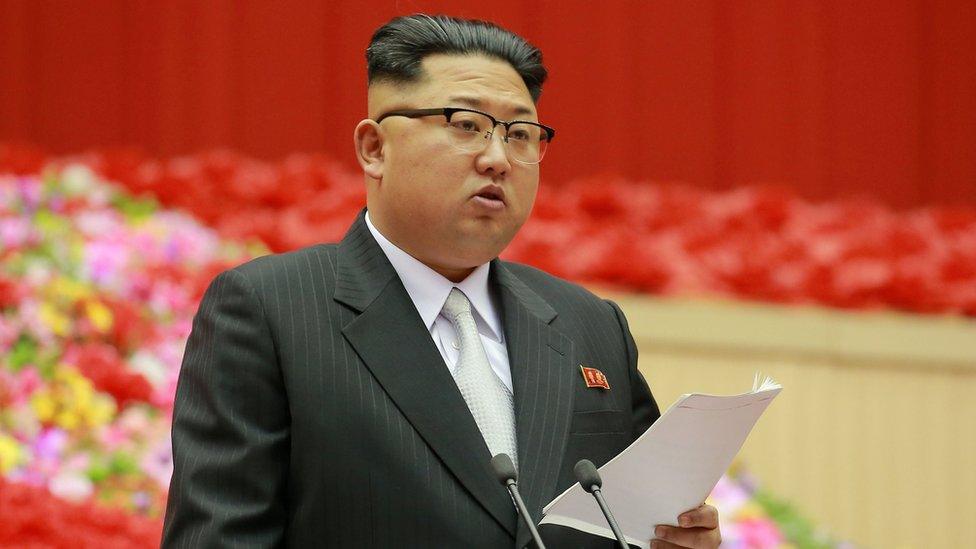
- Published10 August 2017